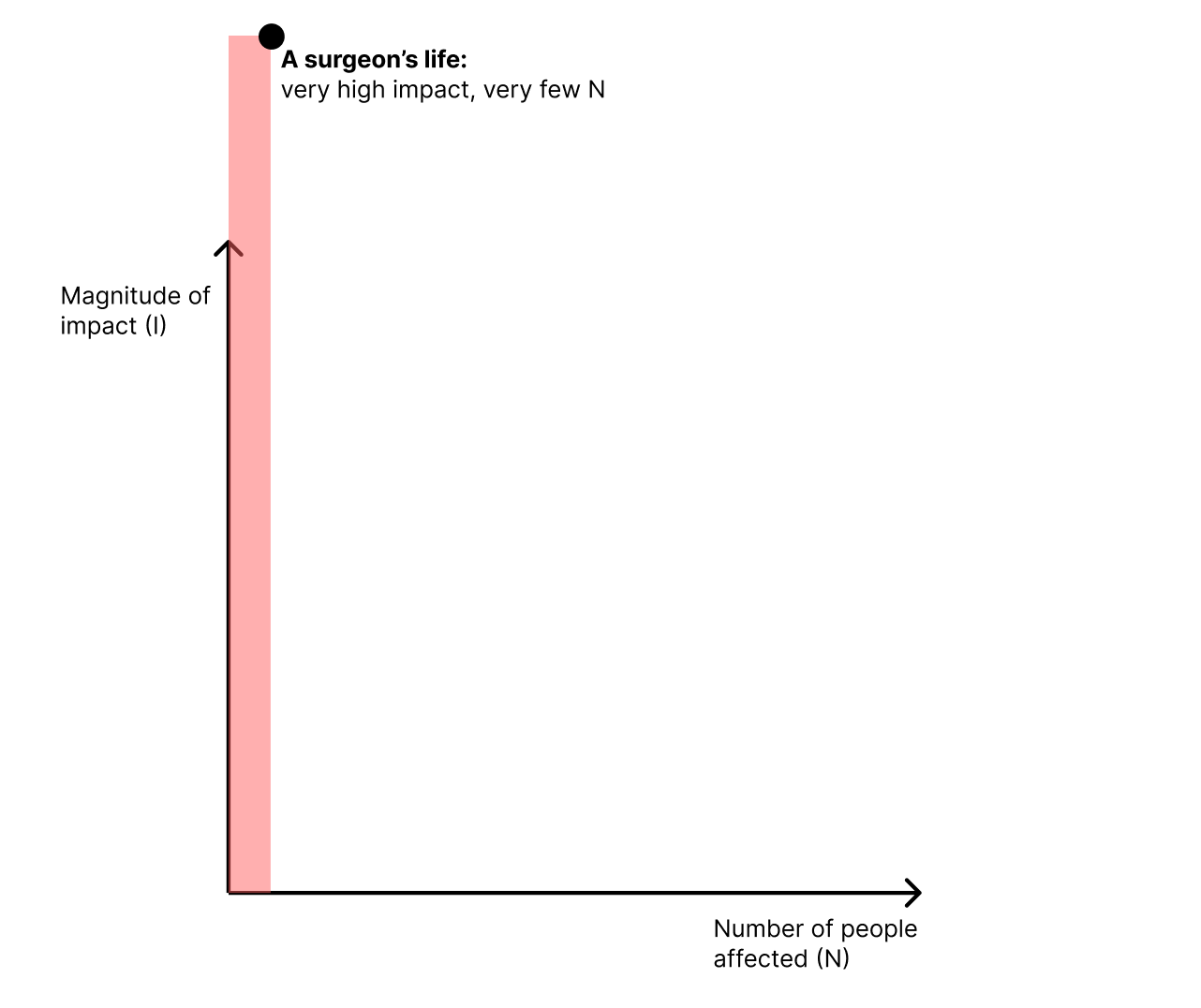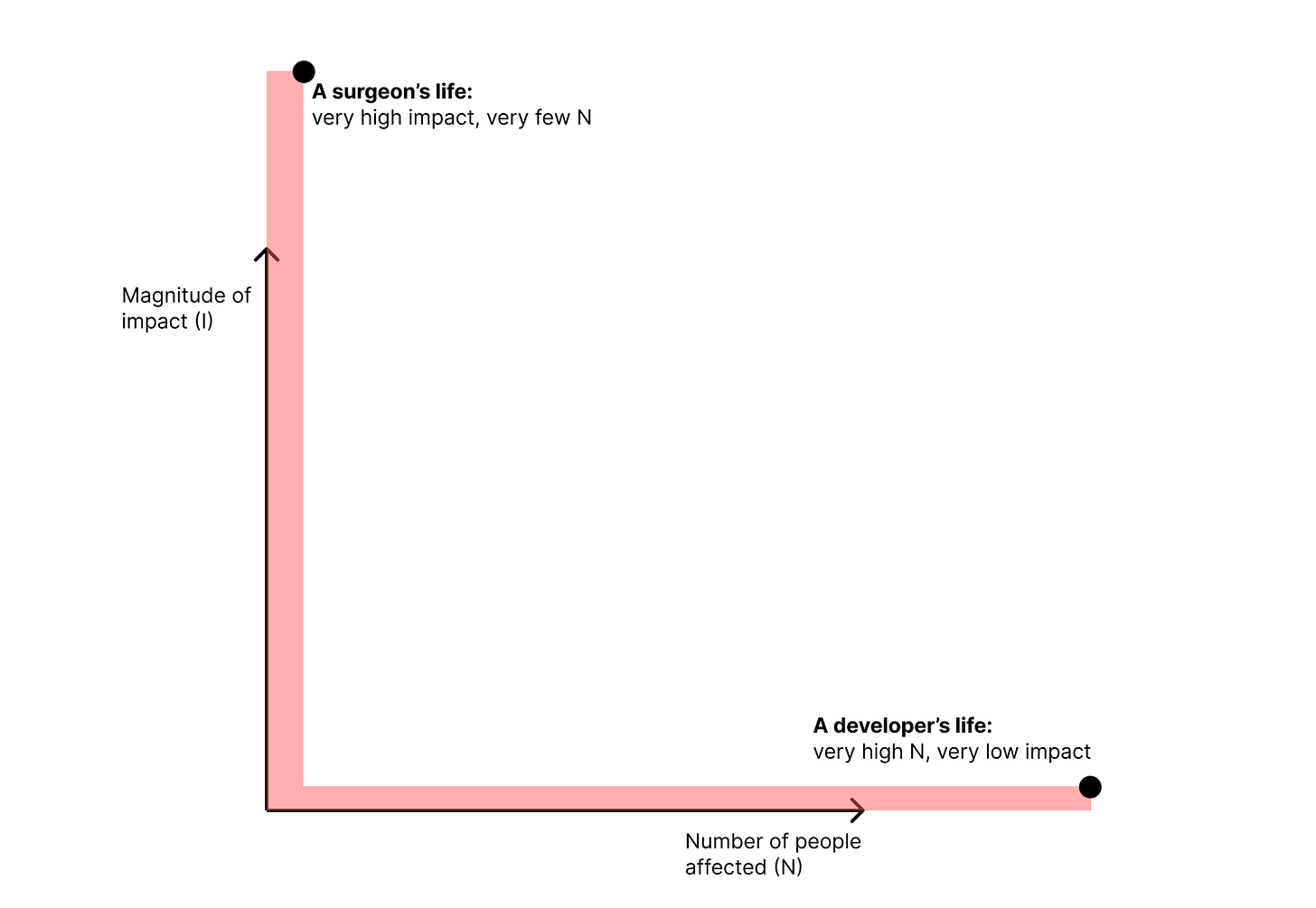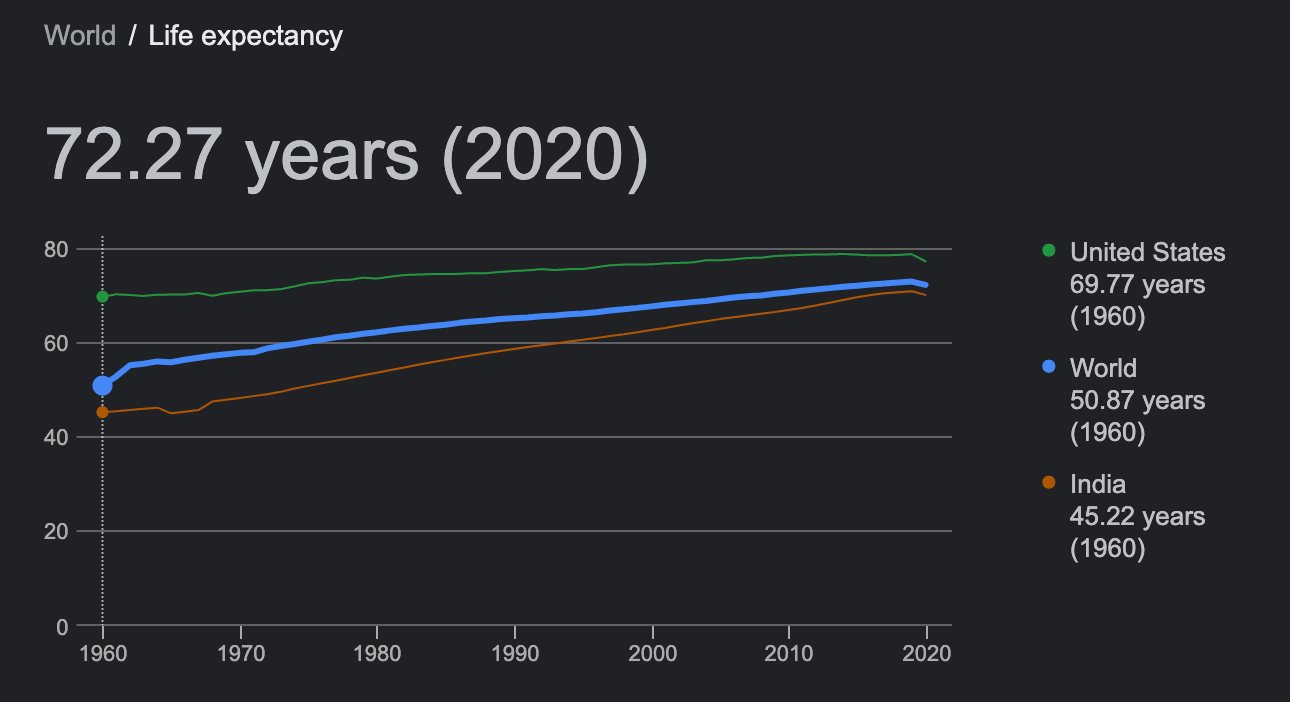Advancing human lifespan by one year
How I came to discover my calling
This is a story about time and impact, dreams and visions.
Ever since I was a little kid I’ve always wanted to make a great impact to the world. I’ve had a tinge of nihilism in my view of the world, and I wanted my life to mean something.
There were 100 billion Homo Sapiens who walked the face of Earth in the past 300,000 years, but the ones we learn about in history are only a handful. I’ve always admired these people, the heroes who have advanced the trajectory of our species. I wanted to make history, and I wanted to go big. This impact-driven attitude runs deep; It really defines who I am and how I view the world.
For a long time, my core vision was “making an impact to humanity”: a very general and audacious feat. But I think the key to life is about realizing that raw, basic instinct into a more detailed and material vision. It is how a boy becomes a man, and how an entrepreneur is built.
As of 2023, my vision is “advancing human lifespan by one year”. An equally audacious feat, yet more detailed and matured. Although I have listed my personal interests in the last essay: The Future I Want to Build, this vision of advancing human lifespan will be the ultimate yardstick of how I measure up my life’s success. There were key moments to this ‘vision maturity’, key experiences and insights that lead to its consolidation. Today, I’m sharing one.
The date is 2020. I am 22 years old, a med school student doing general surgery rounds. Yonsei University is the top private university in South Korea, and the school’s hospital: Severance hospital, is recognized as one of the “big 5” major hospitals in South Korea. It has been a privilege to learn at such a prestigious level of education, because it let me study under the best mentors. Professor NK Kim was a master of colon cancer, and I was assigned to follow him in my first week.
Day 1 was outpatient clinic day. I sat beside Professor Kim and watched alongside every patient who came to the clinic. Some were uneventful post-op follow ups, but some were newly diagnosed colon cancer patients. I remember one married couple, the husband had been diagnosed of colon cancer at the age of 40. They had two kids, of age 5 and 8. When the professor gently asked about their kids, the couple burst into tears. They were crying, hopeless, and I could see the sense of desperation and fear in their eyes. This was their life depending on the disease. I wasn’t prepared for this level of emotion.
And then the professor did something profound. He gently held the couple’s hands, and said: “I’ll have you cured. You came to me with faith, I will not let you down.” Coming from a senior professor who literally wrote the book on colon cancer, the room resonated with conviction. I will never forget that moment in my career. The couple seemed a bit reassured, and the professor scheduled an anterior resection (the cancer operation) later that week.
We as medical students also had a chance to participate in the surgery itself. I remember going into that patient’s surgery with my surgical gown & gloves on, placing my hand onto the patient’s anesthetized body. The surgery took about 4 hours, and the result was beautiful - I’ve checked the patient’s records on the EMR on a regular basis, and he is healthy as ever.
This was the first week of hospital rounds, and it was the first moment of truth for me. This professor has just given someone a new life. My mind was racing. The amplitude of impact was as deep as it could be. This seemed like my path for an impact driven life. And then I started modeling out my future, and how many lives I could save… and the dynamics suddenly all changed again.
Here’s the math:
(1) Professor NK Kim operates on Tuesdays, Thursdays, and Fridays.
(2) Anterior resection takes about 4 hrs each, so every day the capacity is two cases at maximum.
(3) Let’s assume generously, that a surgeon practices from age 30 to age 70.
Now, the total number of patients = 3 days * 2 patients * 48 weeks * 40 years = about 12,000.
If we assume that Professor Kim gave each patient an additional 40 years to live, then his overall impact on humanity would be 480k additional years.
That was the moment when I realized the intrinsic limitation of medicine. Because medicine was such a labor intensive process, the capacity was heavily limited by the practitioner. Very deep impact, yet such few cases. The structure was inherently unscalable.
If we plot out the impact, it would look something like this:
Around that time, another insightful event have occurred to me.
I’ve been a software engineer since I was 18, and by the age I was doing hospital rounds, I’ve reached the skill level where I could code my own website from scratch to production. As a coincidence, I was working with an instagram influencer to build a small website that lets you test your own MBTI in a fun way. MBTI was a whole cultural thing back then, and I was just looking for a production experience as an engineer.
I built the whole website within weeks, and at the day of deployment, the site reached 500k visitors, thanks to the influencer’s audience. After the whole viral cycle has come to its end, about 1 million views has been reached.
1 million. I was dumbfounded by that number. That was the first project of mine that succeeded at such a scale, and the whole process was super scalable: I did not need additional work between visitor #1 and visitor #1,000,000.
Plotting out the impact, it would look something like this:
And I arrived at my insight. The path was clear to me. I had two unique talents, that could work together.
Medicine has a high impact intrinsically.
There’s nothing like saving someone’s life in terms of magnitude.
Software has a high scalability intrinsically.
There’s nothing like software at scalability.
Combining these two, I believed that I could achieve the best of both worlds, and bring good to the world at a whole new level. The area under this “impact plot” would be my overall contribution to the world.
My life was more of a mission ever since that key moment. I had to bring the best of both worlds. Especially when there are so few entrepreneurs in the world who has the potential skillset for both.
I began to measure my contribution in “total years gained for humanity”. I began searching for problems of this magnitude. And thus, I have consolidated my core vision. If I could increase the human lifespan by 1 year, then I’d be advancing 8 billion years. That’s the goalpost now.
Again, this is a story about time and impact, dreams and visions. My vision is clearer now, and I have a strong sense of calling.
I will advance humanity’s lifespan by one year.
This is my Manhattan Project.
This is my mission.






